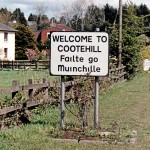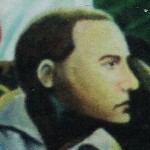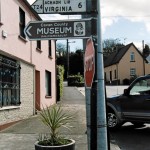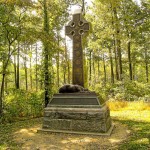Have you ever been to Ireland
With its rolling hills of green?
Sure ‘n its’ the fairest land
That ever has been seen.
And those green hills of Ireland
May be very far away
But they’re close to every Irish here
No matter what the day.
“and stop when half way to Cootehill”……A lyric from the song by Percy French “Come back Paddy Reilly to Ballyjamesduff”. Cootehill (Irish: Muinchille) is a prominent market town in County Cavan. Cootehill was established in 1725 by Thomas Coote and the town had strong ties to the Irish linen industry.
“Yes Dear, there is a Virginia”
Mar 17th, 2017 by admin
“Yes Dear, there is a Virginia”-
Virginia Ireland that is. Virginia is the second largest town in County Cavan. It was founded in the 17th century during the Plantation of Ulster and was named Virginia after Queen Elizabeth I of England. It is near Lough Ramor, one of the largest lakes in County Cavan. It is on the N3 about 85 km northwest of Dublin. Population of Virginia is around 2,000. Common surnames that appeared in the 1901 and 1911 census are Reilly, Lynch, Brady, Duffy, Soden, Sheridan, Reynolds and Carroll.
Gaelic Sports
Mar 13th, 2017 by admin
So you think you know your Gaelic Sports-try these questions:
1. What organization is the governing body of Gaelic Sports world wide? 2. What year was this organization founded? 3. What is the name of the hotel and city where the organization was founded? 4. What is a caman? 5. How many players are on a Gaelic football team? 6. What is a sliothar? 7. What is the most ancient of Gaelic sports? 8. What was the GAA ban? 9. Besides hurling and Gaelic football what was the third traditional Gaelic sport the GAA succeeded in promoting?
ANSWERS: 1. Gaelic Athletic Association or GAA 2. 1884 3. Hayes Hotel-Thurles, County Tipperary 4. A caman is a hurley, the stick used in the sport of hurling 5. Fifteen 6. A ball used in hurling 7. Hurling 8. The GAA ban is a ban on its members playing foreign games, rugby or soccer for example 9. Handball
Irish Brigade Monument
Mar 5th, 2017 by admin
New York Irish Brigade Monument- Gettysburg National Military Park. This monument pays tribute to the 3 New York Regiments of the Irish Brigade; the 63rd Regiment, the 69th Regiment (‘Fighting 69th’), and the 88th Regiment. Colonel Patrick Kelly, a native of Co. Galway was the commander of the Irish Brigade at the battle of Gettysburg in July 1863. The monument was sculpted in 1888 by R. O’Donovan. O’Donovan was a native of Ireland and fought at Gettysburg under the Confederate Flag. There were 2 other regiments in the Irish Brigade at Gettysburg; the 116th Pennsylvania Regiment and the 28th Massachusetts Regiment.
St. Patrick’s Season Newsletter
Mar 4th, 2017 by admin
Click here Conway Mill Trust Newsletter – March 2017 for the latest news from the community organizations in Belfast, City of Derry and Portadown in the North of Ireland that we support. Thanks to all the Conway Mill Trust donors whose contributions make it possible for us to continue our important work.
Smuggling Activity
Mar 3rd, 2017 by admin
There is a lucrative trade in South Armagh for smuggling vegetables from across the South. Seems this is more profitable than smuggling petrol which was the chief operation of the smugglers in the past.







